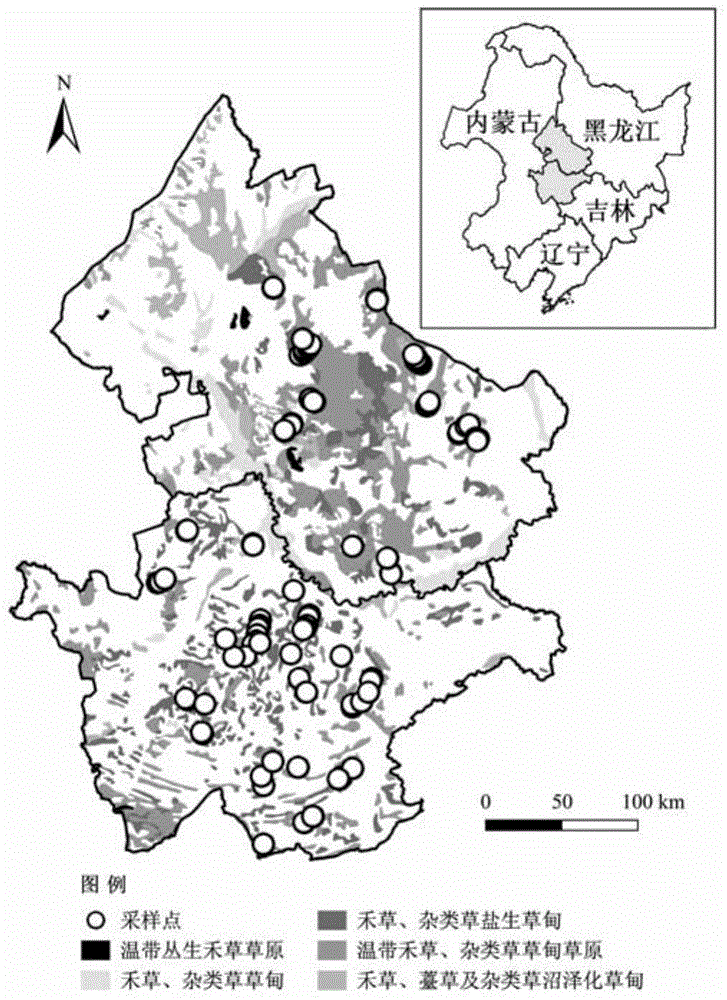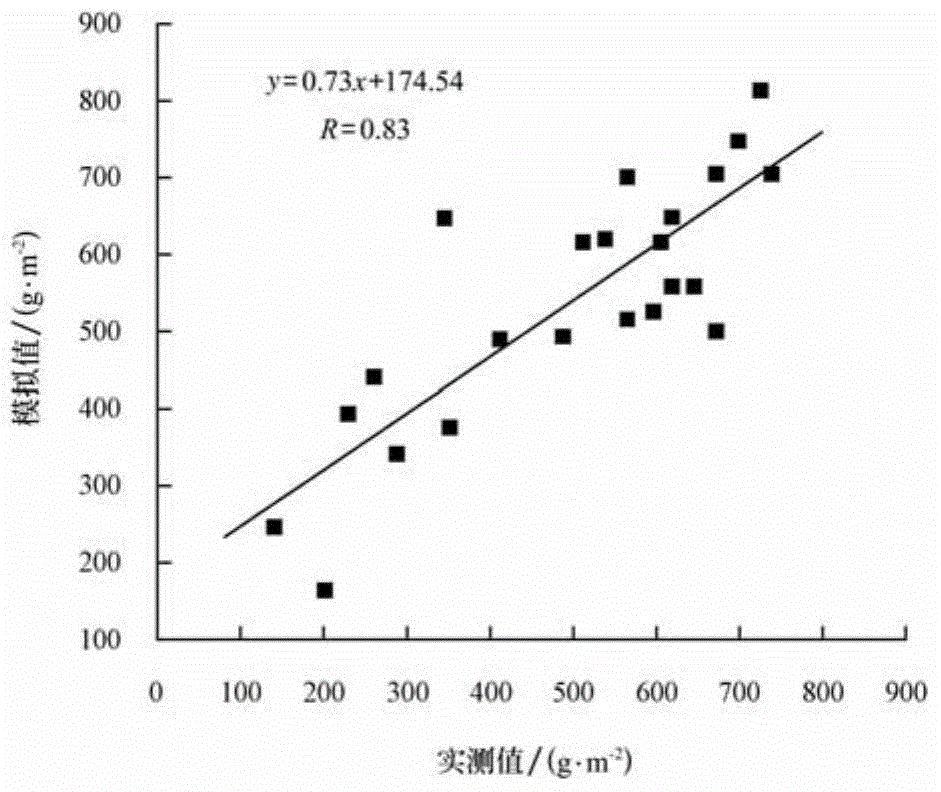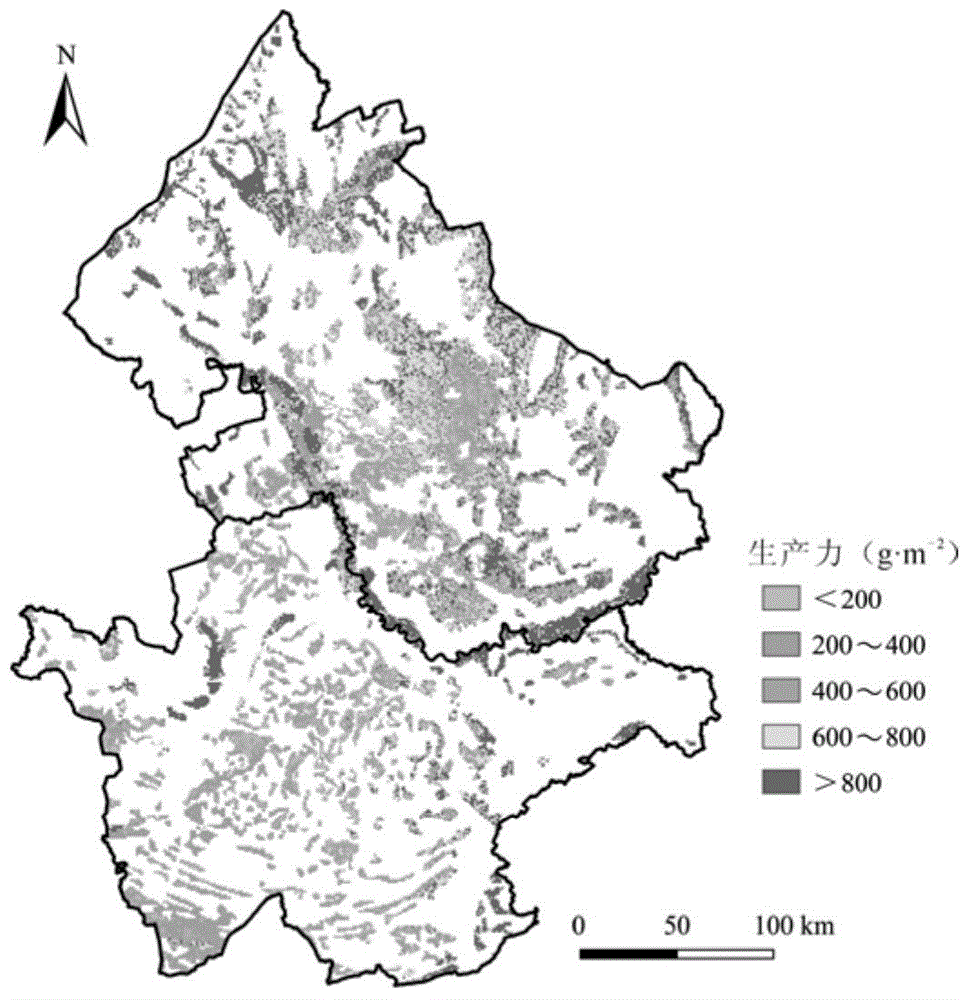Grassland productivity estimation method based on remote sensing and GIS (geographic information system)
A combination of productivity and technology, applied in the field of grassland productivity estimation, can solve the problems of difficult, laborious and time-consuming grassland productivity
- Summary
- Abstract
- Description
- Claims
- Application Information
AI Technical Summary
Problems solved by technology
Method used
Image
Examples
specific Embodiment approach 1
[0017] Specific implementation mode 1: The grassland productivity estimation method based on the combination of remote sensing and GIS in this embodiment is implemented in the following steps:
[0018] Step 1: Preprocessing the original grassland data:
[0019] Unify the original grassland data under the same coordinate system and projection; where the projection is Albers projection, the same coordinate system uses 105° east longitude, and the grassland raw data includes grass productivity data, vegetation index data, and grass spatial distribution data And land use data;
[0020] Step 2: Select the normalized vegetation index NDVI, the ratio vegetation index RVI, the modified soil adjustment vegetation index MSAVI and the enhanced vegetation index EVI to construct a multi-vegetation index-based multi-type grassland productivity estimation model;
[0021] Step 3. Use the field-measured grassland productivity data in the same period to verify the accuracy of the multi-type grassland p...
specific Embodiment approach 2
[0026] Specific implementation manner 2: This implementation manner is different from specific implementation manner one in that the specific process of obtaining grassland productivity data in the first step is:
[0027] Collect the grassland biomass during the period of maximum grass productivity in the field, and record the location of sampling points with GPS. Set 3 or 5 small squares as repeats in each 10m×10m sample plot, collect the green part of each small square on the ground, and dry it at 65℃ to balance weight. The biomass of all small squares in each sample plot The average value is the aboveground biomass of each sample. According to the ratio of grassland belowground biomass to aboveground biomass (root / shoot ratio), the total grassland biomass is obtained; through the conversion coefficient of biomass and carbon, grassland productivity data is obtained.
[0028] Other steps and parameters are the same as in the first embodiment.
specific Embodiment approach 3
[0029] Specific embodiment three: This embodiment is different from specific embodiment one or two in:
[0030] 1. NDVI and EVI come from the MOD13Q1 vegetation index data set developed by NASA (National Aeronautics and Space Administration) / MODIS (Moderate Resolution Imaging Spectroradiometer) based on a unified algorithm (download URL: https: / / wist.echo.nasa.gov) ), RVI and MSAVI are calculated by using the reflectance data of the red and near-infrared bands in the vegetation index data set, see formulas (1), (2), (3), (4) for details:
[0031] NDVI = ρ NIR - ρ R ρ NIR + ρ R - - - ( 1 )
[0032] EVI = 2.5 ( ρ NIR - ρ R ) ρ NIR + 6.0 ρ R - 7.5 ρ B + 1 - - - ( 2 )
[0033] RVI = ρ NIR ρ R - - - ( 3 )
[0034] MSAVI = 0.5 X [ 2 ρ NIR + 1 - ( 2 ρ NIR + 1 ) 2 - 8 ...
PUM
 Login to View More
Login to View More Abstract
Description
Claims
Application Information
 Login to View More
Login to View More - R&D
- Intellectual Property
- Life Sciences
- Materials
- Tech Scout
- Unparalleled Data Quality
- Higher Quality Content
- 60% Fewer Hallucinations
Browse by: Latest US Patents, China's latest patents, Technical Efficacy Thesaurus, Application Domain, Technology Topic, Popular Technical Reports.
© 2025 PatSnap. All rights reserved.Legal|Privacy policy|Modern Slavery Act Transparency Statement|Sitemap|About US| Contact US: help@patsnap.com



